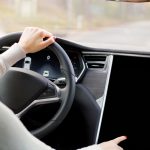The answer to whether CPUs or GPUs are better for running Large Language Models (LLMs) like GPT (Generative Pre-trained Transformer) lies in understanding the specific computational strengths of each. While CPUs have been the cornerstone of computing, managing a variety of tasks with a limited number of cores, GPUs have evolved as specialized processors capable of handling enormous amounts of data through parallel processing, a key requirement for LLMs’ complex matrix and vector operations.
Understanding the hardware evolution, prior discussions have highlighted the gradual shift from CPUs to GPUs in the domain of artificial intelligence (AI) and machine learning (ML). Historically, CPUs were the default choice for most computations; however, the need for faster and more efficient processing for AI and ML tasks has led to the ascendancy of GPUs. With their ability to execute thousands of parallel operations, GPUs have become indispensable for tasks such as deep learning training, which involves processing vast datasets and performing high volumes of computations.
Why Do GPUs Outperform CPUs in AI?
GPUs are particularly adept at accelerating the execution of LLMs, delivering significant speed advantages over CPUs. Their architecture, consisting of hundreds or thousands of cores, is tailored for the simultaneous processing of computations, which aligns perfectly with the needs of LLMs. This capability not only shortens the time required for model training but also for generating responses, which is essential for real-time AI applications.
What Factors Influence Hardware Selection?
The decision between utilizing a CPU or GPU for LLMs hinges on several considerations. While smaller, less complex models may not necessitate the computational prowess of a GPU and could run on a CPU without compromise, larger models thrive on GPU capabilities. Financial constraints are also pivotal, with GPUs often demanding a higher investment for not just the hardware but also associated cooling systems due to their elevated power consumption. Moreover, the development and deployment environment may favor one processor type over the other, influencing the optimal hardware choice.
How Do CPUs and GPUs Compare in Functionality?
To illustrate the differences, a comparative table can juxtapose CPUs and GPUs concerning LLM operations, highlighting key distinctions such as the number of cores, parallel processing ability, and associated costs. This comparison can serve as a practical guide for researchers and practitioners in making an informed choice suitable for their specific LLM application needs.
Useful Information for the Reader
- GPUs significantly expedite LLM training and inference.
- CPUs may suffice for simpler, smaller models.
- Cost and environmental support dictate hardware preference.
In a comprehensive assessment of the role of hardware in running LLMs, it is evident that GPUs, with their superior parallel processing capabilities, present a substantial advantage over CPUs. This is particularly true for AI and ML tasks that demand high-speed computations and efficiency. The choice between the two, however, is nuanced, hinging on specific project requirements such as the complexity of the model, available budget, and the computation speed desired. As advancements in hardware continue to evolve, the dynamics between CPUs and GPUs may shift, but for now, GPUs are the go-to choice for most AI-driven initiatives.
An exhaustive study published in the Journal of Artificial Intelligence Research, titled “Accelerating Large-Scale Inference with Anisotropic Vector Quantization,” provides further insight into the technicalities of LLM processing. The study delves into methods for optimizing the inference phase of machine learning, which is highly relevant to the discussion on CPUs versus GPUs. It underscores the importance of not just the hardware selection but also algorithmic efficiency in accelerating AI tasks.










